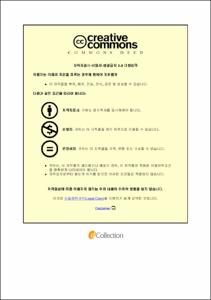Polymerization of Hollow Core-Shell Particles with Graphene Nanoplatelets and Their Electrochemical Performance
- Abstract
- 리튬 이차전지는 휴대용 전자기기에서 전기자동차, 에너지 저장 장치와 같은 대형 배터리로 발전해오고 있으며 그에 따라 전지에 대한 연구는 점점 더 활발히 진행되고 있다. 그러나 연구의 대부분은 활물질, 전해질, 분리막에 집중되어 왔으며 바인더의 연구는 비교적 많이 이루어지지 않았다. 전극 내 바인더와 같은 접착물질은 활물질들간 그리고 활물질과 집전체 사이의 응집력을 제공함으로써 높은 기계적 강도와 전기화학적 안정성을 가지게 한다. 그러므로 전지의 안정성 및 성능 향상을 위해서 바인더는 없어서는 안 될 요소이며 그 연구는 필수적이다.
최근 hollow core-shell (HCS) 등의 고분자 입자들이 hollow 구조의 특성상 가질 수 있는 뛰어난 물리적, 화학적 특성과 높은 안정성을 바탕으로 여러 분야에서 연구개발이 진행되고 있으며 전지 분야에서 역시 차세대 바인더로 주목받고 있다.
본 연구에서는 hollow 구조의 전도성 고분자 복합체 바인더를 중합하고 이를 리튬 이차전지 음극 및 전기이중층 커패시터에 적용하여 상용화된 수분산 SBR 타입의 바인더와 비교분석을 진행하였다. 먼저, graphene nanoplatelets (GnP)을 sonication 시켜 물에 분산시킨 후, 그에 MMA-BA-MAA 공중합체 core와 St-BA-AN 공중합체 shell을 유화중합하여 core-shell (CS)을 제조하였고, hollow 구조를 얻기 위해 core를 제거하는 알칼리제이션 과정을 거침으로써 최종적으로 GnP/HCS 복합체 바인더를 제조하였다. 그 후, GnP/HCS 복합체 바인더의 성능을 확인하고자 리튬 이차전지의 lithium titanium oxide (LTO)와 silicon/graphite (Si/C) 음극 및 전기이중층 커패시터의 활성탄 전극에 각각 적용하였고, 사이클 수명, 율속 특성, 임피던스 등의 전기화학적 분석과 FT-IR, Raman, adhesion test, electrolyte uptake 등의 물리적 분석을 실시함으로써 CS, HCS 그리고 상용화된 SBR 타입의 바인더 (400B)와 비교 분석하였다.
|Lithium ion batteries (LIBs) have evolved from portable electronic devices to larger batteries such as electric vehicles and energy storage system. This indicates that research on batteries, including electrode composite materials, is becoming more active nowadays. However, most of the research has been focused on active material, electrolyte and separator. The study of binder has not been done much. It is already known adhesive elements, such as binder, provide cohesion between active materials and adhesion between active materials and current collector to have the strong mechanical ability and long-term electrochemical stability. Therefore, binder is an integral part of improving battery stability and performance, and the research is essential.
Recently, polymer particles such as hollow core-shell (HCS) are under research and development in various fields, and HCS polymer particles are also seen as attractive binders in the battery field based on the excellent physical and chemical characteristics and the high stability of hollow structure.
In this study, conductive polymer complex binder with hollow structure was polymerized and the synthetic polymer was examined as a new water-treated conductive binder for various anodes of LIBs and electric double-layer capacitors (EDLCs) compared with commercial water-treated SBR type binder. First, the graphene nanoplatelets (GnP) were dispersed by sonication to the water and then MMA-BA-MAA copolymer core and the St-BA-AN copolymer shell were polymerized by in-situ polymerization method with a thermal initiator system to manufacture the core-shell (CS), and finally alkalization was carried out to remove the core for the hollow structure. Then, to check the performance of the GnP/HCS binder, it was applied to lithium titanium oxide (LTO) and silicon/graphite (Si/C) anode of LIBs and activated carbon electrode of EDLCs, respectively. And finally it was compared and analyzed with the CS, HCS and commercialized SBR type binder (400B) by performing electrochemical analysis of cycle performance, rate capability and electrochemical impedance spectroscopy and physical analysis of FT-IR, Raman, adhesion test and electrolyte uptake and so on.
- Issued Date
- 2020
- Awarded Date
- 2020-02
- Type
- Dissertation
- Alternative Author(s)
- KIM JIN YEONG
- Affiliation
- 울산대학교
- Department
- 일반대학원 화학공학전공
- Advisor
- 오은석
- Degree
- Master
- Publisher
- 울산대학교 일반대학원 화학공학전공
- Language
- eng
- Rights
- 울산대학교 논문은 저작권에 의해 보호받습니다.
- Appears in Collections:
- Chemical Engineering > 1. Theses (Master)
- 파일 목록
-
-
Download
 200000287906.pdf
기타 데이터 / 2.79 MB / Adobe PDF
200000287906.pdf
기타 데이터 / 2.79 MB / Adobe PDF
-
Items in Repository are protected by copyright, with all rights reserved, unless otherwise indicated.